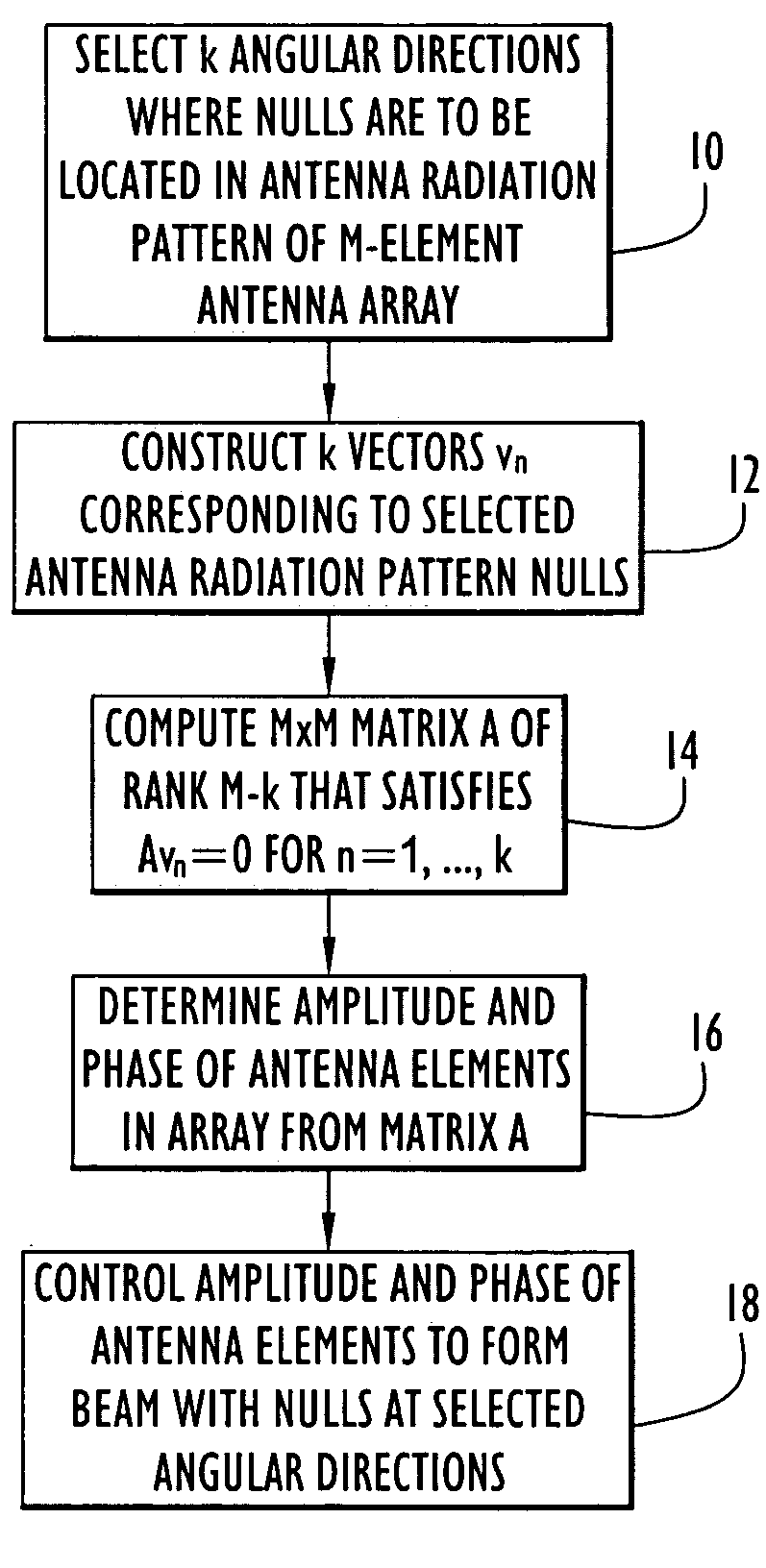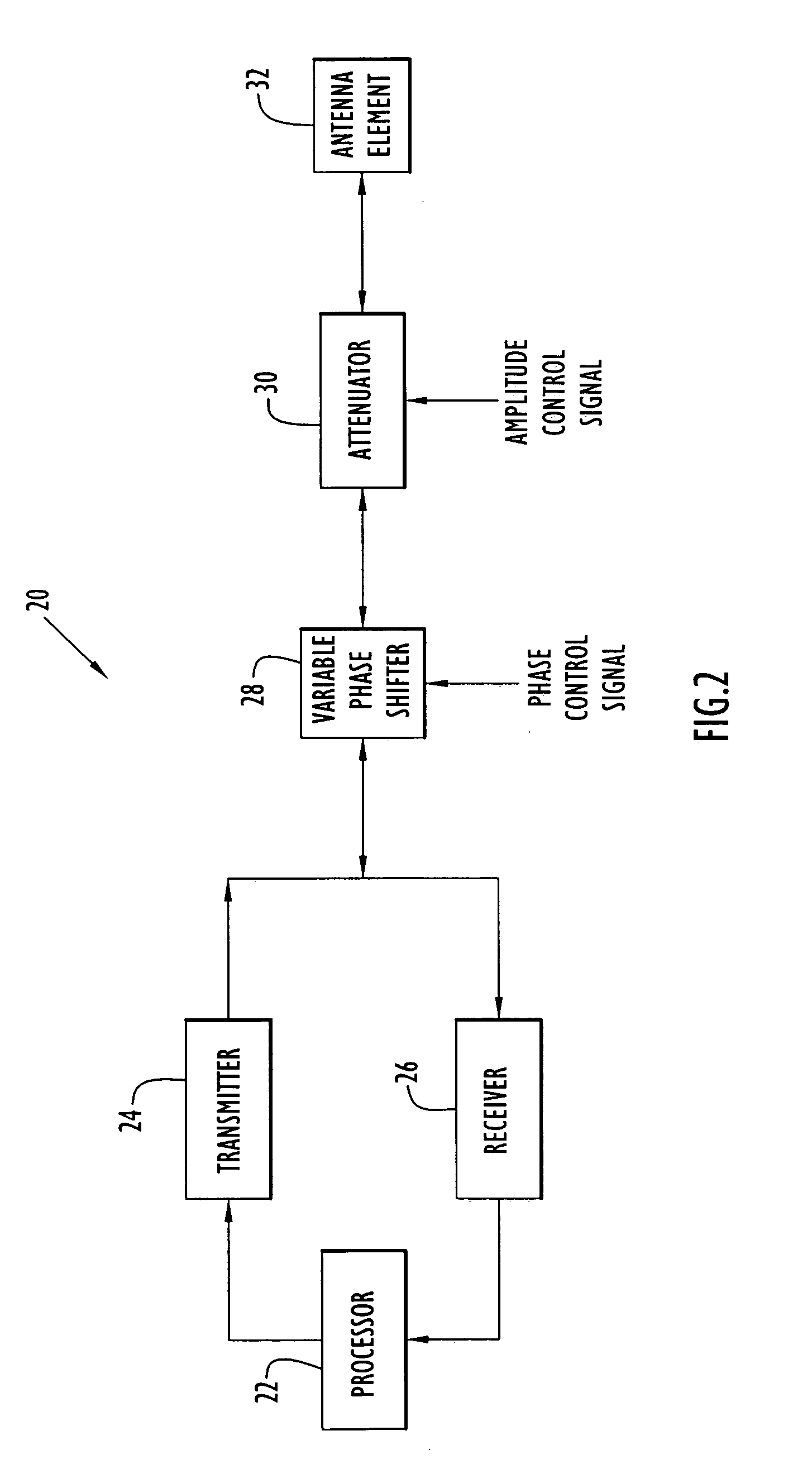Methods and apparatus for shaping antenna beam patterns of phased array antennas
a phased array antenna and beam pattern technology, applied in the direction of antennas, electrical equipment, radio transmission, etc., can solve the problems of reducing the array gain and, therefore, the transmitted and received power levels, and no other method than some form of tapering has been used for these purposes, so as to reduce the sidelobe level reduce the width of the main lobe of the antenna beam pattern, and increase the power of the main lob
- Summary
- Abstract
- Description
- Claims
- Application Information
AI Technical Summary
Benefits of technology
Problems solved by technology
Method used
Image
Examples
Embodiment Construction
[0024]The following detailed explanations of FIGS. 1–10 and of the preferred embodiments reveal the methods and apparatus of the present invention. A new scheme for flexible shaping of radiation patterns is presented, with a wide range of possible applications. These include, but are not restricted to, array sidelobe reduction. For this application, improvement over existing conventional amplitude-tapering methods can be achieved in which greater reduction in sidelobe levels is achieved while maintaining main lobe widths less than or at most equal to those yielded by tapering methods alone.
[0025]As used herein, the terms antenna beam(s), or simply “beam(s)”, refer generally to transmitted energy concentrated in a certain direction or a sensitivity or receptiveness of the antenna to signals arriving from particular directions. The antenna beam is formed by a directional antenna and is directed over a particular angular region in accordance with the antenna pattern (i.e., the radiated...
PUM
 Login to View More
Login to View More Abstract
Description
Claims
Application Information
 Login to View More
Login to View More - R&D
- Intellectual Property
- Life Sciences
- Materials
- Tech Scout
- Unparalleled Data Quality
- Higher Quality Content
- 60% Fewer Hallucinations
Browse by: Latest US Patents, China's latest patents, Technical Efficacy Thesaurus, Application Domain, Technology Topic, Popular Technical Reports.
© 2025 PatSnap. All rights reserved.Legal|Privacy policy|Modern Slavery Act Transparency Statement|Sitemap|About US| Contact US: help@patsnap.com



